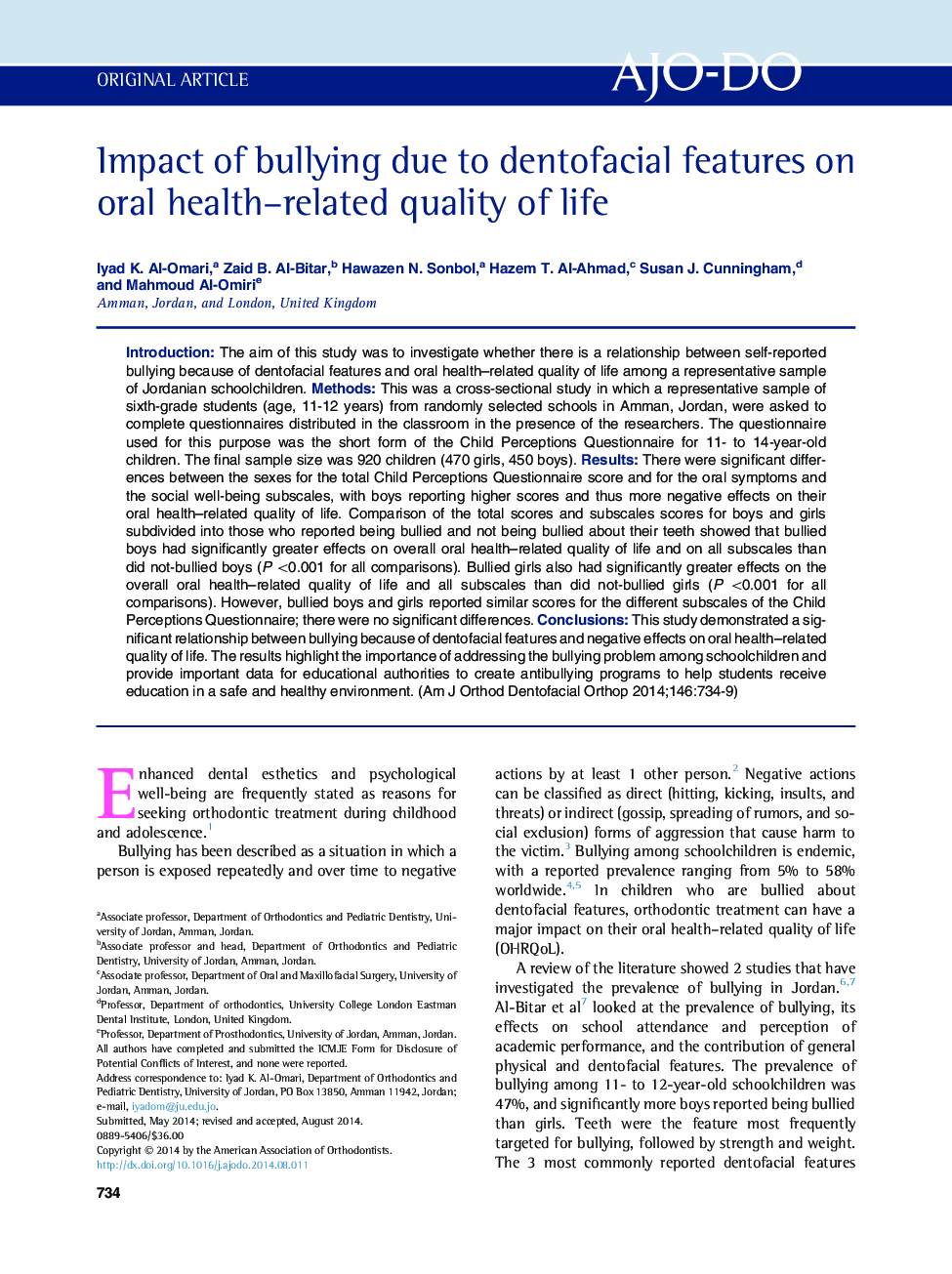| Article ID | Journal | Published Year | Pages | File Type |
|---|---|---|---|---|
| 3116109 | American Journal of Orthodontics and Dentofacial Orthopedics | 2014 | 6 Pages |
•Bullying due to dental features and oral health–related quality of life was investigated.•This was a cross-sectional study of 920 schoolchildren aged 11 to 12 years.•The Child Perceptions Questionnaire for 11- to 14-year-old children was used.•We found a significant relationship between bullying and negative effects on OHRQoL.•It is important to address bullying problems among schoolchildren.
IntroductionThe aim of this study was to investigate whether there is a relationship between self-reported bullying because of dentofacial features and oral health–related quality of life among a representative sample of Jordanian schoolchildren.MethodsThis was a cross-sectional study in which a representative sample of sixth-grade students (age, 11-12 years) from randomly selected schools in Amman, Jordan, were asked to complete questionnaires distributed in the classroom in the presence of the researchers. The questionnaire used for this purpose was the short form of the Child Perceptions Questionnaire for 11- to 14-year-old children. The final sample size was 920 children (470 girls, 450 boys).ResultsThere were significant differences between the sexes for the total Child Perceptions Questionnaire score and for the oral symptoms and the social well-being subscales, with boys reporting higher scores and thus more negative effects on their oral health–related quality of life. Comparison of the total scores and subscales scores for boys and girls subdivided into those who reported being bullied and not being bullied about their teeth showed that bullied boys had significantly greater effects on overall oral health–related quality of life and on all subscales than did not-bullied boys (P <0.001 for all comparisons). Bullied girls also had significantly greater effects on the overall oral health–related quality of life and all subscales than did not-bullied girls (P <0.001 for all comparisons). However, bullied boys and girls reported similar scores for the different subscales of the Child Perceptions Questionnaire; there were no significant differences.ConclusionsThis study demonstrated a significant relationship between bullying because of dentofacial features and negative effects on oral health–related quality of life. The results highlight the importance of addressing the bullying problem among schoolchildren and provide important data for educational authorities to create antibullying programs to help students receive education in a safe and healthy environment.
